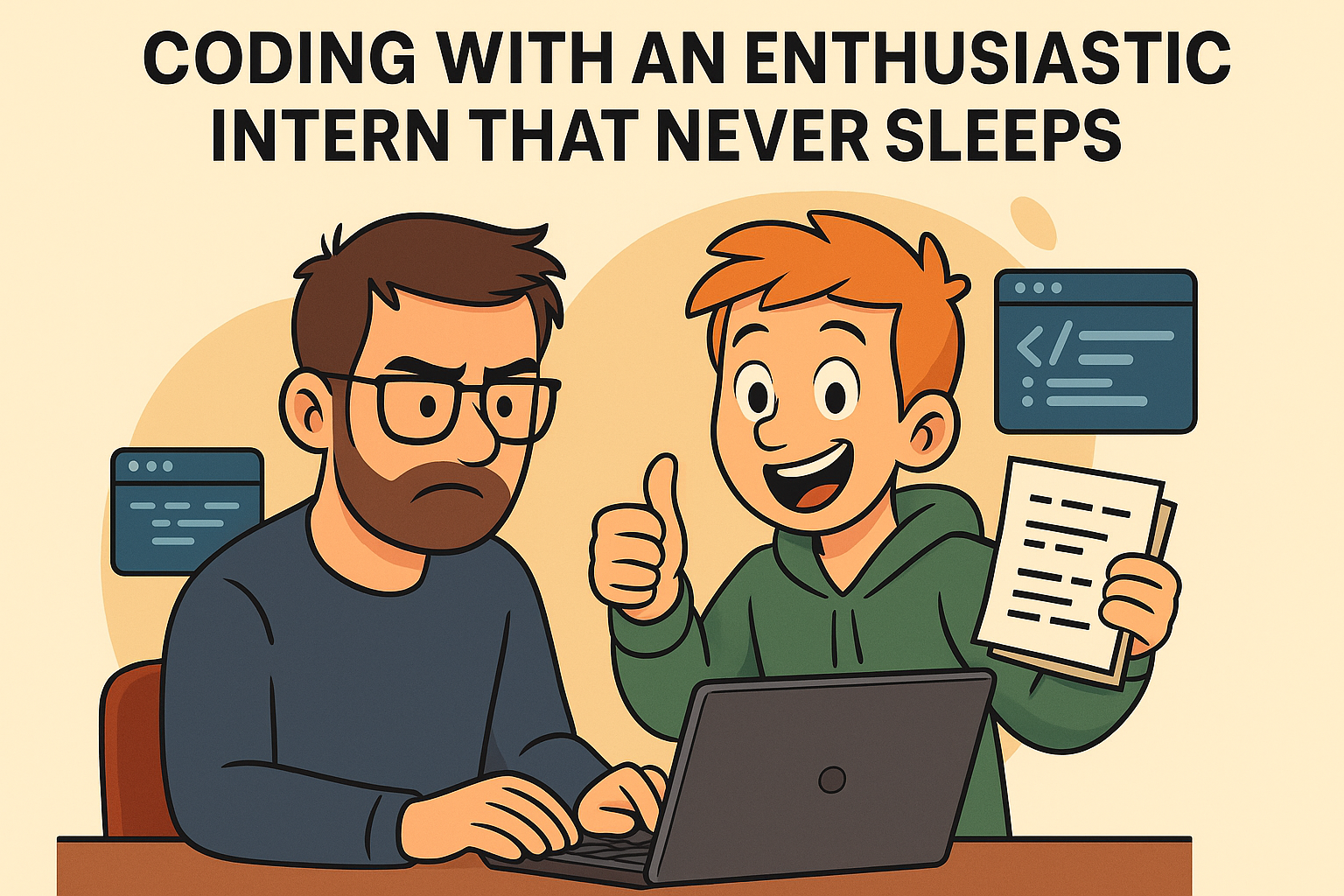Coding With an Enthusiastic Intern That Never Sleeps
My journey from ChatGPT snippets to agent workflows, and what it taught me about trust, validation, and collaboration with AI.

Before AI tools, coding in a team meant juggling calendars, reviews, and endless Slack threads. It worked, but slowly. Now it’s like I’ve been handed an enthusiastic intern who never sleeps: quick with ideas, sometimes brilliant, often questionable, but always ready to draft something I can shape. Half the time I’m cleaning up its mess, the other half I’m wondering how I ever lived without it.
I started with ChatGPT. The workflow was simple: take a distinct problem, explain it clearly, get a code snippet back, and then manually integrate it into my existing codebase. It wasn’t just about speed; it was about confidence. Each snippet worked as a proof of concept, and I built trust in both the tool and my own ability to guide it. The clarity of having one problem and one direct answer was empowering. It felt like I wasn’t just coding faster, but actually thinking better about how I approached problems.
The turning point came when I read a blog post that reframed the whole idea of working with AI. Instead of treating the AI as a code generator, the suggestion was to use it as a thinking partner. The workflow flipped: describe your idea, let the AI interrogate it with clarifying questions, co-create a developer specification, and only then start writing code.
I tried this approach with Junie, my first experiment in building a lightweight agent workflow, and the results were surprisingly strong. Instead of fragmented snippets, I ended up with a living specification that gave me direction, guardrails, and a shared understanding of what I was actually building. It felt less like autocomplete and more like designing with a collaborator.
The funny part was when that “collaborator” multiplied. I had two, sometimes three, chat windows open at once: one AI writing the draft, another reviewing it like a snarky code peer, and occasionally a third butting in with completely unrelated “helpful” ideas. It was like running a stand-up meeting with teammates who talked over each other, argued about the spec, and occasionally derailed the agenda. Chaotic? Absolutely. But in that chaos, the spec evolved in ways I wouldn’t have reached alone, and sometimes, out of the noise, a surprisingly coherent plan emerged.
These small experiments mattered. Each success gave me the confidence to push further, from tiny scripts and quick refactors to bigger projects where the stakes were higher. The shift wasn’t about technical capability so much as trust: trusting the workflow, trusting the agent to hold context, and trusting myself to keep the process disciplined. It stopped being about getting code out faster and started becoming about shaping a repeatable system for collaboration.
Through all of this, one lesson stood out. No matter how capable the agent, the human has to remain the validator. Every piece of code had to be checked against the specification, the style guide, and the broader system constraints. The agent could generate quickly, but I had to ensure consistency, correctness, and long-term maintainability. In the end, regardless of whether the code was generated or handwritten, my name would be on the pull request that finally got merged. That responsibility sharpened the point: AI can assist, but accountability always rests with the human.
Looking back, the pattern is clear. ChatGPT gave me the foundation and confidence. Junie showed me the power of workflow over snippets. Multiple AIs in parallel, arguing like a chaotic meeting, created momentum I hadn’t expected. Small wins opened the door to larger projects. And at every step, I remained the final gatekeeper.
The real challenge isn’t raw capability, but learning how to collaborate effectively. In many ways, being a developer in this new world feels less like writing code and more like being the orchestrator of a symphony, bringing together tools, ideas, and agents, while ensuring the final performance still carries your name.
What about you? Have you tried weaving AI into your coding workflow, whether as a coding partner, a reviewer, or even just a sounding board for ideas? I’d love to hear what experiments worked for you, and where you hit the walls.
Key Takeaways
- ChatGPT gave me the foundation and confidence.
- Junie taught me the power of workflow over snippets.
- Multiple AIs in parallel can act like a chaotic meeting, messy but effective.
- Small wins with agents opened the door to tackling bigger projects.
- The human is the final gate for validation.
- At the end of the day, accountability sits with me.
Comments
Share your thoughts and join the discussion below.